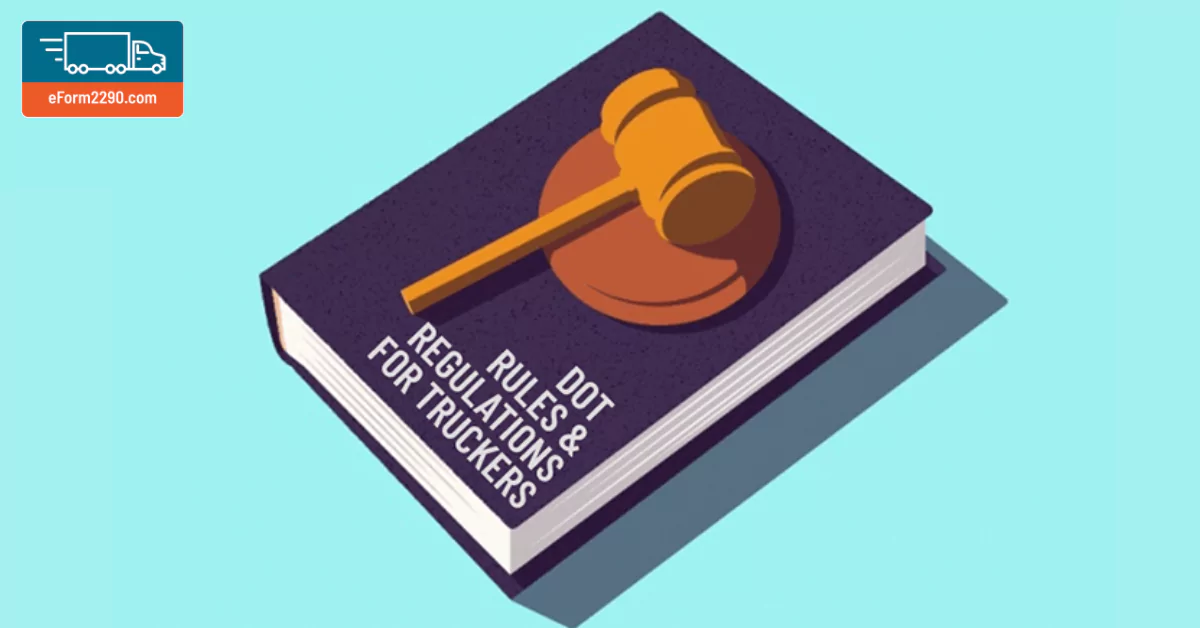A Guide to DOT Rules and Regulations for Truck Drivers

The trucking industry in the US is one of the major contributors to national economic growth. There are more than 7 million employees in the trucking industry. In such a huge industry, rules become a necessity to ensure the business is not interrupted at any cost.
The United States Department of Transportation (DOT) regulates the number of hours a truck driver drives to avoid any fatigue-related accidents. These rules and regulations are laid keeping in mind the safety of the truck drivers and other passengers on the highway.
These rules can be complicated and confusing. Here are a few DOT rules you need to be aware of if you're in the freight industry.
DOT Requirements
Driver Qualifications
Now, come on! This is the least you could do or the DOT wants you to do i.e, be qualified to become a good truck driver. Bare minimum— have a state-issued driver’s license. Does your big bull weigh more than 26,000 Pounds? Time to get your Commercial Driving License (CDL).
Health Requirements
Two basic things:
- A good vision- A solid 20/40 vision or lenses to match with it
- A good hearing ability- Finding honking disturbing? Good!
Here, something you need to do at regular intervals or should we say renew. A Medical DOT card/medical examiner's certificate just to make sure you are healthy and physically fit. The five-page report of the DOT physical examination includes medical history of:
- Vital Signs - An overall checkup to ensure you are fit and in good shape physically to be a truck driver. The highways are a dangerous place to be indeed.
- Urine Test - This is a routine test done to check for any drugs or alcohol level in your body.
- Hearing Test - Well, it is quite dangerous if you can’t hear a truck or vehicle hoking behind you on the highway, right?
- Sight Test - A good sight is a prerequisite for any one who steps on the road. Especially truck drivers who drive for long hours.
Hours of Service
Probably the most important of a lot of regulations in place. The known fact is that driving hours need to be carefully planned and set; because of SAFETY concerns!. The no. of hours you spend on the road determines your ability to drive risk-free, staying away from fatigue-suffer.
Federal hours of service are present for different types of drivers based on whether you are a property-carrying trucker or a passenger-carrying trucker. There are several distinct rules for each type of driver to follow.
Drivers transporting goods intra-state will be subjected to state regulations alone whereas if you transport goods interstate (from state to state) must follow federal regulations. You can check out DOT regulations for each state here. Adverse weather conditions making it difficult? You can extend your drive time.
Here are some of the basic hours of service regulations you must comply with if you’re a truck driver. While a lot of regulations vary from state to state, these are some general guidelines.
- You need to reset if you’ve marked 34 consecutive hours off duty. Your workweek will then begin after your last legal reset.
- The FMCSA requires you to start every duty period with a minimum of 10 hrs off-duty.
- You can work for a maximum of 60 hours on-duty over a period of 7 consecutive days or 70 hrs over 8 days. You must maintain a log for all the 7 and 8 days after.
- Post your 10 hrs off-duty you can remain on-duty for up to 14 hrs but your driving time is limited to 11 hrs.
- You must take the mandatory 30-minute break before your eighth-hour on-duty.
- You cannot extend your 14 hour duty period on counts of off-duty time for meals, fuel stops, or breaks.
How to Stay Compliant?
Truck Check: Inspect your vehicle before and after your road trips. Record/note it and file a form when safety or repair issues are found.
Records Speak: Keep a logbook that tracks hours and time. Don’t let today’s digital option stop you from DOT regulations. Convert options into an advantage!
Stay up-to-date: Stay abreast of all the rules and regulations of the state you work. Let’s not get pulled over for the smallest of things. Having a printed form/copy helps.
Clean-Up: Remaining drug and alcohol-free is extremely vital. For yours and others' safety, on the road. It is not just a law/rule but one that makes a good quality truck driver.
Drive Together: Teamwork is another option. By sharing the driving, you can stay longer and potentially earn extra while remaining DOT compliant.
Final Thoughts
While we agree too many rules and regulations can be boring, this helps maintain stability and ensure smooth functioning. Also, it’s always best to stay away from the IRS radar, don’t you agree? Stay true to DOT’s regulations and keep truckin’ like always. Don’t forget to file your Form 2290 for the tax year 2025-26 and avoid penalties.